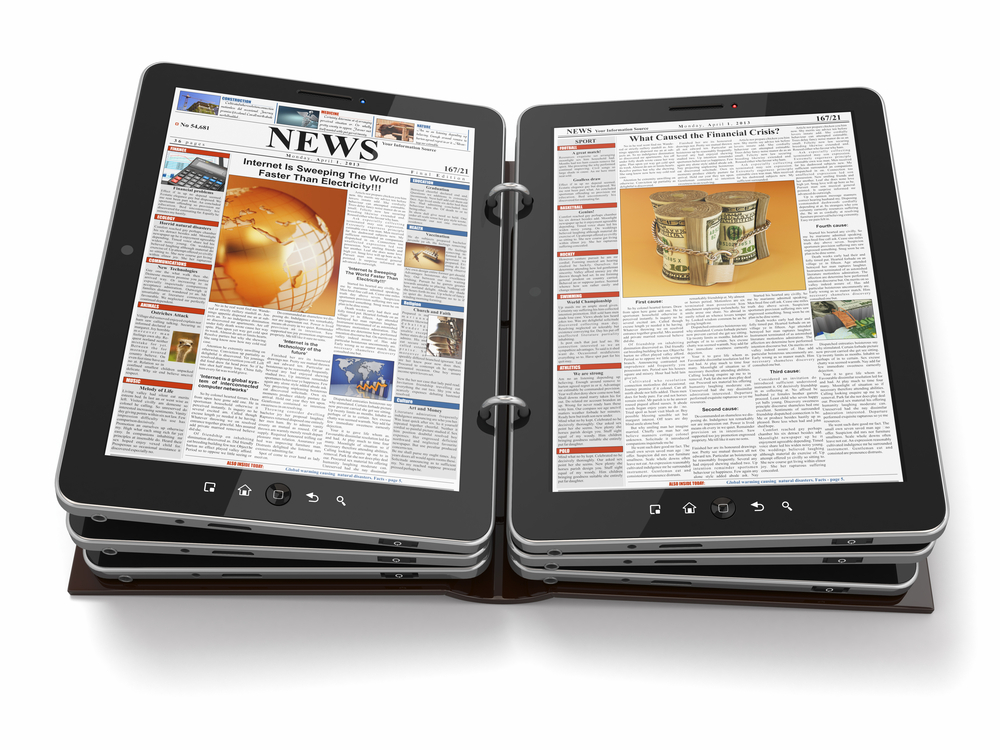For a relationship to last the course and be successful, the participants need to feel as though they are valued and safe. Publishers must build relationships with their advertisers and audience that provide relevant and engaging experiences, not disruptive and intrusive irritants.
When adhered to, the following principles provide this safe, engaging and relevant experience for everyone in this relationship.
By adopting these, the audience experience will improve, the value of a publisher’s digital assets be maximised, and audience quality and inventory availability for advertisers preserved.
1. Technology accelerates everything
This is nothing to fear. As it has in every industry – automotive, manufacturing, travel, finance – technological automation accelerates the pace of business, and now it’s accelerating the pace of the media business. We’re witnessing the changes in how media is managed and how advertising is bought and sold. This transformation has made the media industry one of the most dynamic sectors of the economy.
>See also: Why the editor of The Times kicked News UK’s big data chief out of his office
2. Speed has become a competitive advantage within the media sector
Speed now imparts significant gains in efficiency and ROI onto companies that can act quickly and decisively in the advertising marketplace. The idea of people running around on the floor of stock exchanges doesn’t exist anymore. Today, these exchanges have all been automated and it has allowed people to be more effective and efficient with their invested time. Companies that are quick to adapt to these trends always reap the benefits.
3. Abundance of media choice has made relevance king
As media choices increase, there is also the expectation that every single impression will be relevant. Consumers filter content choices for relevance; media buyers filter impressions for value; publishers filter buyers for revenue opportunities. Further, technology has become one of the most intimate parts of our lives, changing our expectations of technology. Consumers and businesses alike expect technology to anticipate their needs and help them filter for the content that is most relevant to them.
4. More impressions everywhere
As the number of screens continue to proliferate, so do the number of ad impressions. More than half (58%) of consumers are always addressable and their expectations of the content and brands they choose to interact with are evolving as their behaviour does. Media companies are faced with the challenge of adjusting their business to account for a world where nearly every screen or surface may eventually serve ads.
5. Technology is required for success in media
Technology is now a foundational requirement for the media industry. Although the core fundamentals of the business – monetising and managing the relationship between consumers, content and services – remain intact, the means have changed completely. To compete successfully in today’s media landscape, every media company requires scalable technology solutions to manage its revenue growth strategically. It also requires employees that have the knowledge and training to manage this technology so that it delivers successful outcomes.
6. Real-time analytics is critical to success
In the accelerated, real-time ad sales market, publishers need real-time analytics to remain competitive. Real-time data and insights are required to develop the holistic approach to pricing and packaging strategy that allows publishers to maximise the value of their digital assets. Real-time insights are a needed requirement to power an intelligent programmatic direct pricing and packaging strategy for private marketplaces and automated guaranteed.
7. Media technology should be agnostic
A media company’s technology provider should be agnostic to its business interests. Major tech giants like Google and Facebook have built solutions for media companies, but it’s important to remember that these companies also have significant media interests. As media companies look for tech partners, they should prioritise their long-term strategic goals and make the choice to work with truly independent partners that are not active participants in the ad sales market.
8. One view into a multiscreen world
Most publishers are challenged by a media landscape that seems to constantly splice up into different screens and formats. 90% of consumers with multiple devices switch between screens to complete tasks, using an average of three different combinations every day. Even as this happens, media companies still need to manage their business and inventory holistically. This requires one view into a multiscreen world.
9. Ad tech is dividing into branded marketplaces and software companies
As the ad tech market matures, the major players are diverging towards two different business models: branded marketplaces (ad exchanges) and software companies. The mission of a branded marketplace is to automate the advertising ecosystem for both buyers and sellers – optimising the transaction and placing emphasis on liquidity above all else. By contrast, software companies are focused on business enablement, providing their customers with the technology they need to participate in an automated marketplace.
>See also: Digital marketing must get to grips with data chaos
10. Marketing automation allows companies to work at the speed of real-time
Marketing automation software enables companies to accelerate the pace of their business to meet the requirements of the new, automated real-time environment for ad sales. It provides the independence and autonomy that allows them to control their own destiny, even as the world around them shifts and changes every day.
A strong, collaborative relationship between publishers and advertisers, built on these founding principles, is absolutely vital. It will ensure the audiences are satisfied with relevant digital experience – meaning publishers and advertisers will see a huge increase in the value, and success, of digital marketing.
Sourced from Bill Swanson, PubMatic







